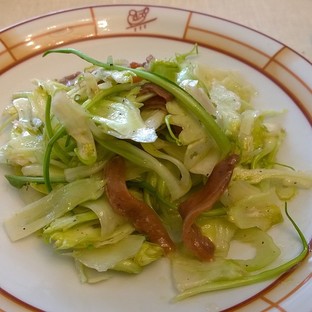 Puntarelle are the young sprouts in the form of a head, and a close relative of chicory. This slightly bitter, crunchy salad green was mentioned in Roman literature around 1550 BC by Pliny. While originally a wild member of the chicory family, it has been cultivated for many hundreds of years and can be considered one of Rome's favorite veggies, primarily used in Insalata Puntarella. Grown all around the Mediterranean basin, in Italy it's primarily grown in Puglia. In the Lazio region it is known as Cicoria Catalogna, due to it's popularity in Spain. It loves lots of sun but not a lot of water, with the spouts coming during the fairly mild Mediterranean winter, in January and February. In the kitchen, you can prepare Puntarelle raw seasoned with salt, oil and vinegar, or prepared Roman style... by cutting the bottom root off the head, then peeling away the dirty outer leaves as you would a head of lettuce. It's best to taste one of the inner leaves to see if they are too bitter or not. If you want less bitter taste, peel off a bit more. The best parts are toward the center--with feathery tops. You cut them from the base and then slice them lengthwise like a julienne cut. Soak them in a bowl of cold water until they curl up. You can then dress your insalata with olive oil, vinegar, salt, pepper and some garlic. Some anchovies with a squeeze of lemon works well, too. You can also use them in cooked recipes, as in a frittata. The leaves can be sautéed with sausage and orecchiette as is done in Puglia, or winter soups with beans and garlic. They can be difficult to find in the States, but not impossible. Being grown in California, they are appearing more and more in gourmet green grocers in the larger cities. 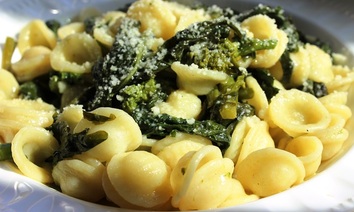 Orecchiette and Rapini Orecchiette and Rapini Rapini, Broccoli di Rapa, Broccoli Rape (or Rabe) and Cime di Rapa Yes, essentially they are all the same... aside from the fact that there are many varieties grown and whether or not the plants were overwintered (sweet) or not (bitter). The plant has more in common with mustard greens than broccoli (perhaps a distant relation), yet in Italy, Cime di Rape translates as Turnip Greens, even though they have little to do with turnips, either. Basically, Rapini looks like a bunch of turnip or mustard greens with bunches of small, broccoli looking florets. In the U.S. you can find several varieties sold under the name Broccoli Rabe ("raab"). Rapini is commonly used in mostly southern Italian cuisine and has a bitter taste (unless picked during the winter or early spring). The leaves, buds, and stems are all edible. The trick to calming its bitterness is boiling as you do pasta--in salted water. After draining or squeezing out excess water, you can add olive oil, garlic, and some dried pepperoncini. Use Rapini for in pasta sauces, omelettes, frittatas, soups and polenta. 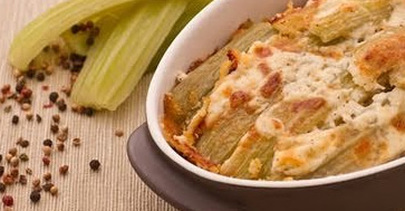 Cardoon Casserole Cardoon Casserole While in Italy, my son, Lucas and I came across a vegetable that we thought looked like stalks of celery--it was labeled cardy. Otherwise known as cardoon, it might also be found as artichoke thistle, cardone, cardoni, carduni, or cardi. A member of the sunflower family, the leaves are very much like the spiny thistle. There are many cultivated types but in some parts of the world it grows wild and can actually be an invasive species. In the western and central Mediterranean region it was domesticated in ancient times. Cardoon leaf stalks can be served steamed or braised, and taste very much like artichokes with some bitterness. Especially during the Christmas holiday, people from the Abruzzi region serve a traditional cardoon soup with meatballs in chicken broth. Often an egg is mixed into the soup (called stracciatella, my Dad used to love this). There are even casserole dishes which feature baked cardoon with onions, cheese or a bechamel sauce. 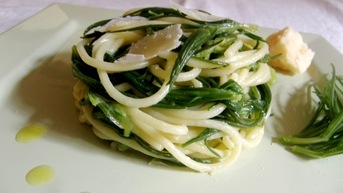 Spaghetti with agretti and lemon Spaghetti with agretti and lemon Agretti, also called Barba Di Frate (or Friar's Beard) in Italy are the edible grass-like leaves of the Salsola soda plant. Agretti is actually a cold weather green typically grown in saltwater irrigated land around the Mediterranean Basin. In the kitchen, it is boiled, then placed in ice water to preserve the color and eaten as a leafy vegetable. It has a slight crunch similar to sprouts. It can be eaten raw with its taste described as being grassy and a bit salty. The most common way to prepare after boiling is to dress with olive oil, salt and lemon for a refreshing side dish with fish or chicken. 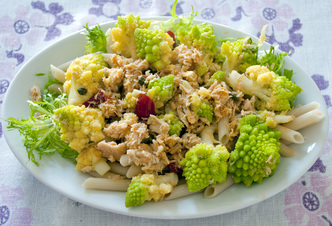 Let's state the obvious here... The coolest thing about Romanesco is its spiraling buds, each containing more even smaller buds (does the "Fibonacci sequence" ring a bell?). The Romanesco (often called Cavolo Romanesco Broccoli or Roman Cauliflower) is a product of genetic breeding by 16th century Italian farmers. Romanesco is in season during from late summer to early fall, and it can often be found at local farmers’ markets in the eastern coast of the United States. Although it looks like cauliflower with a similar texture, in fact, it tastes like broccoli. And as with most Italian recipes, simple is best. Boiled or steamed, florets tossed with pasta, lemon, olive oil and pepper and you have a great meal. 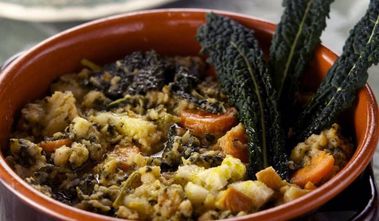 Cavolo nero is also known in Italy as Lacinato or Nero de Toscana, but can be found as black kale, black cabbage or Tuscan kale. It is related to its popular cousin, Cavolo Fiore (similar to cauliflower). It has long, deeply textured black leaves and was originally grown in Tuscany by the Etruscans in 600 BC. Very similar to kale, it is used in many traditional Italian dishes, from soups to main courses. Like with other kales, Cavolo Nero is blanched briefly in boiling water and then sautéed with EVO, garlic or anchovies. It can be used equally well in pasta dishes, salads (raw) and soups. In Tuscany, it is often an ingredient in a thick soup called ribollita.
0 Comments
Your comment will be posted after it is approved.
Leave a Reply. |
Categories
All
Archive
June 2024
|


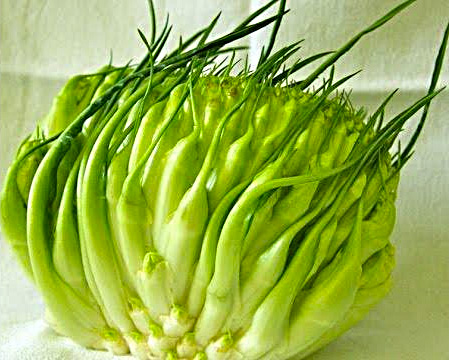
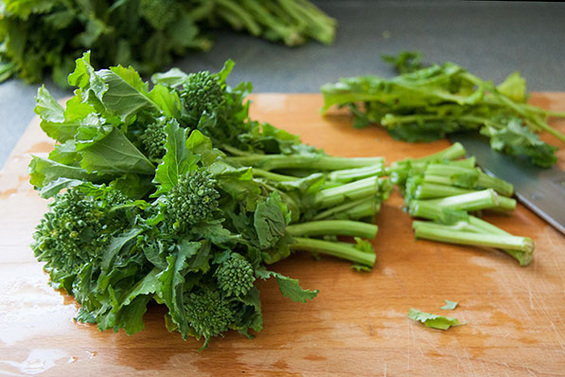
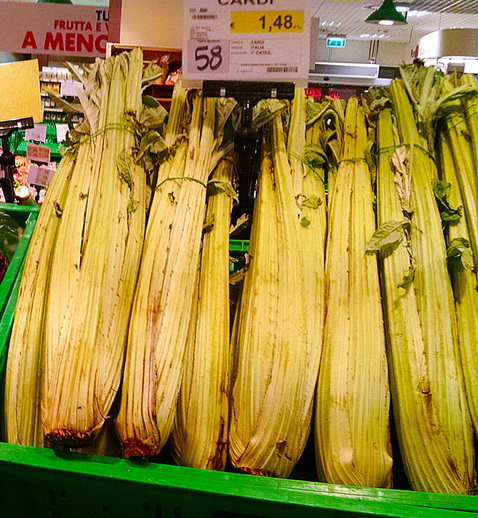
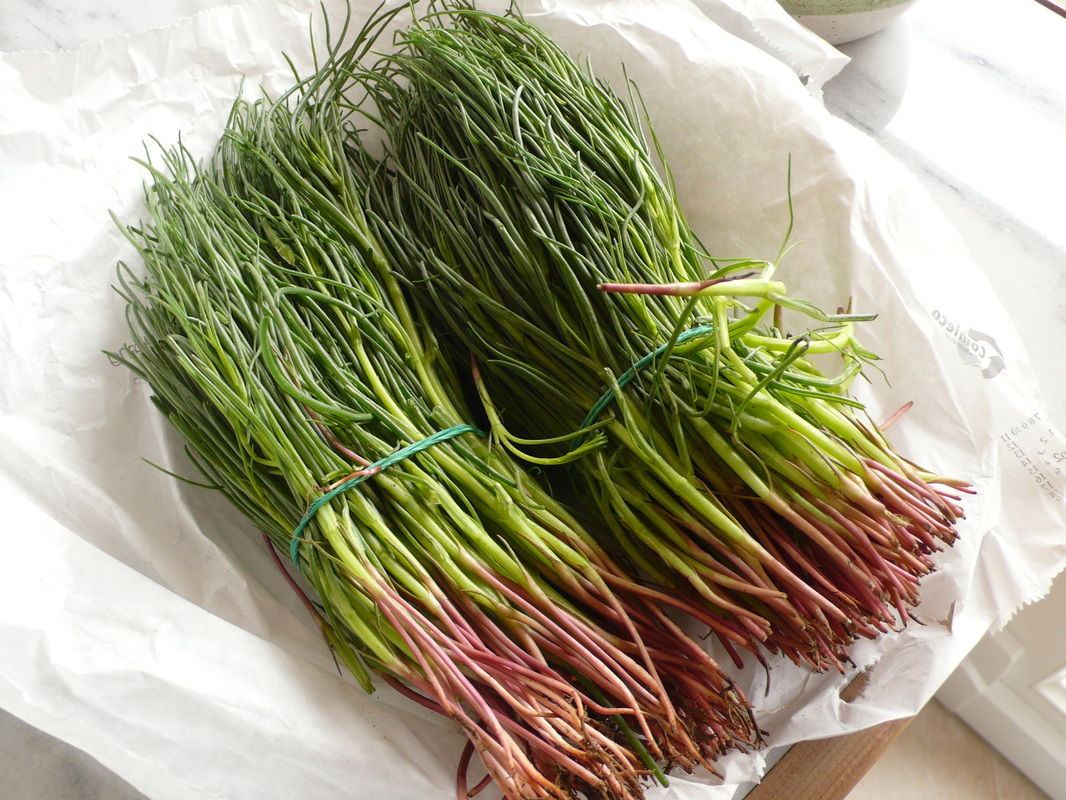
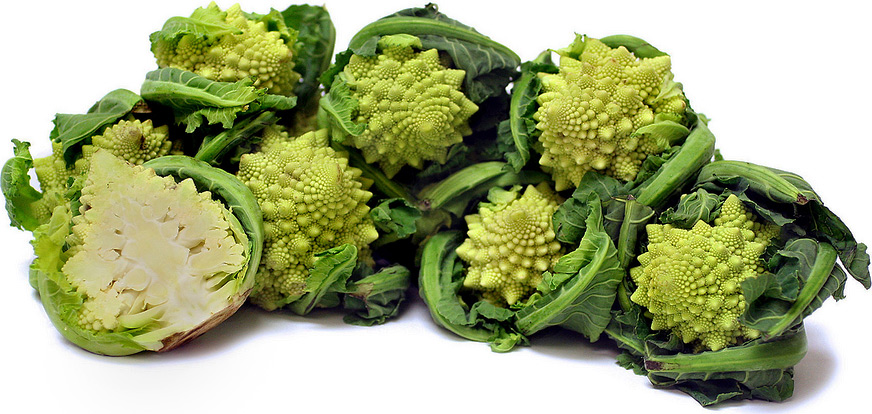
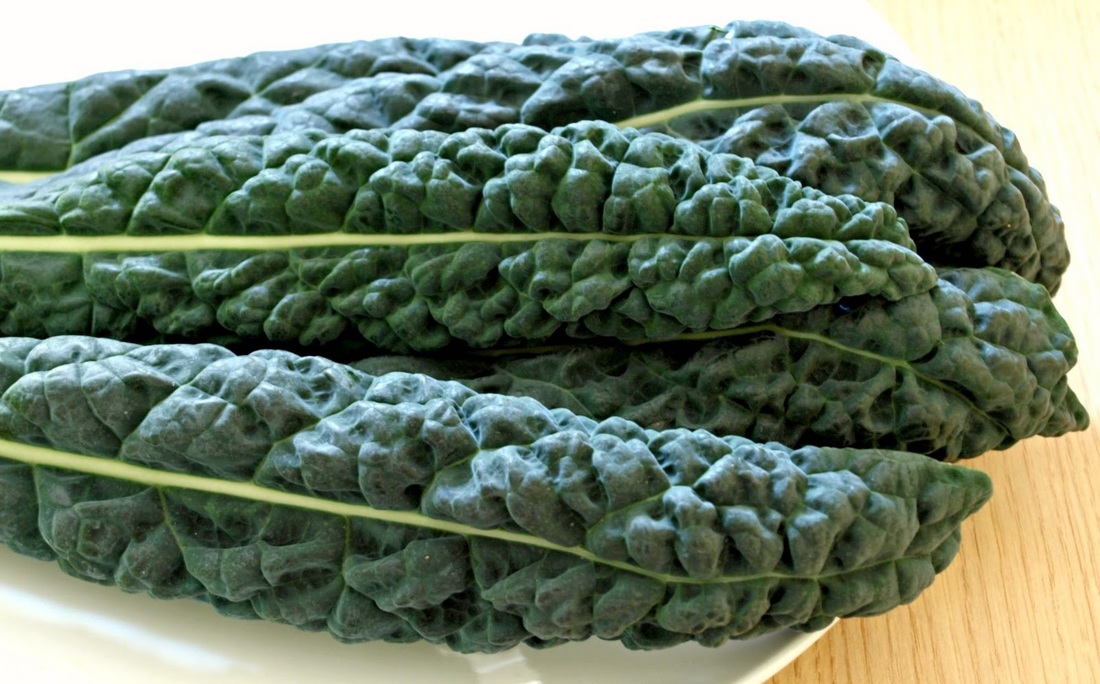
 RSS Feed
RSS Feed
